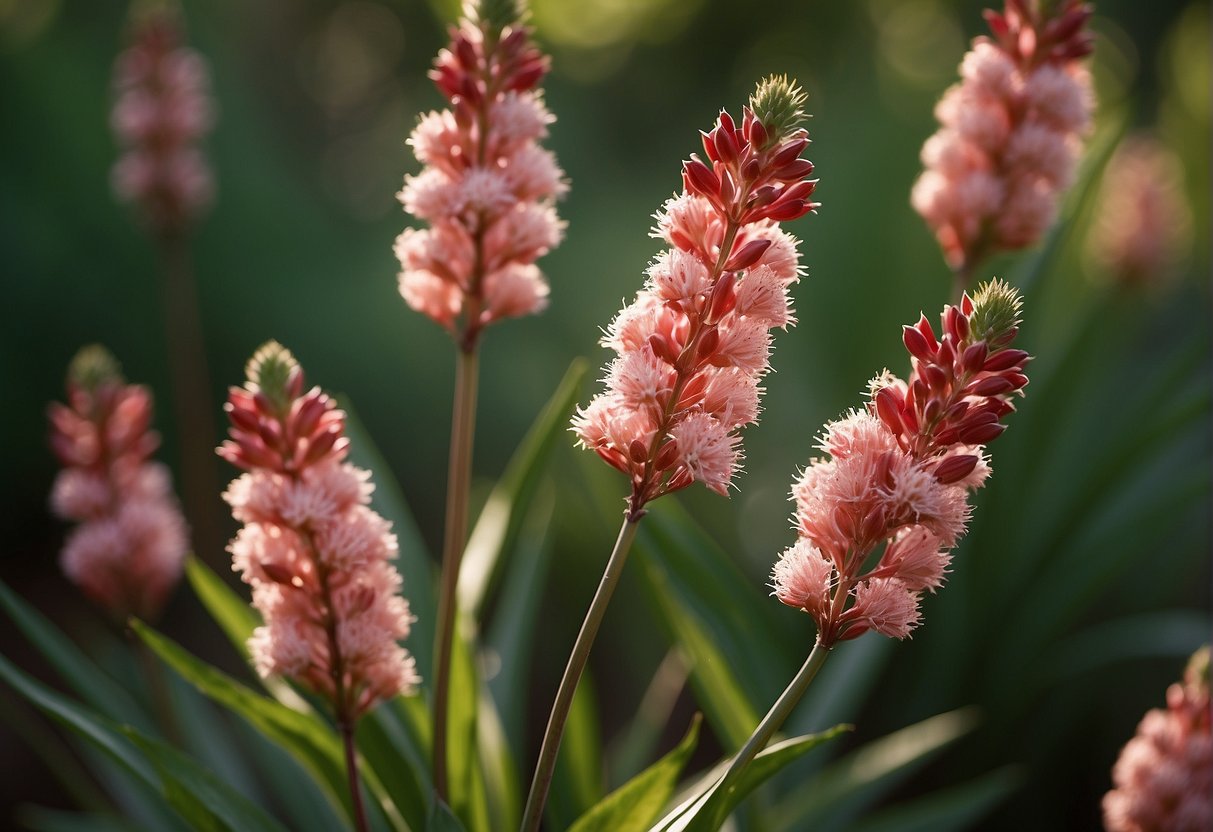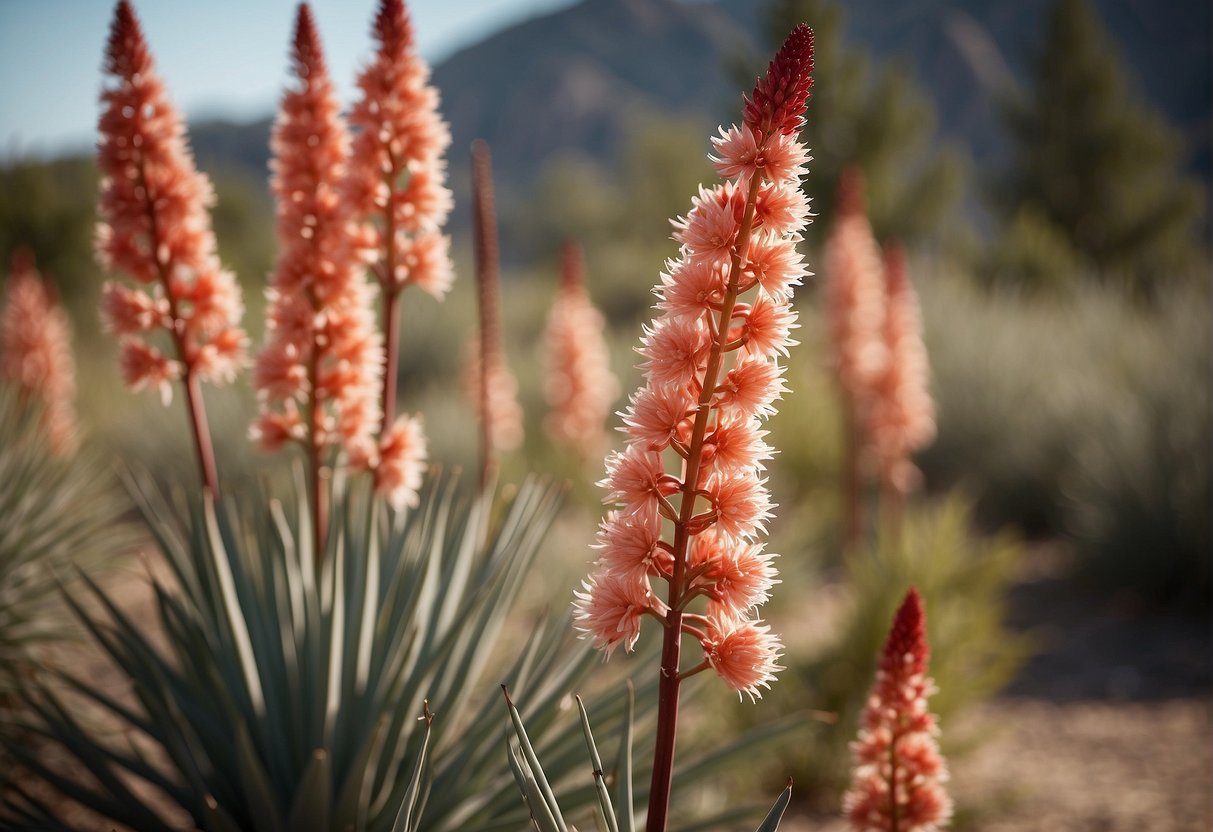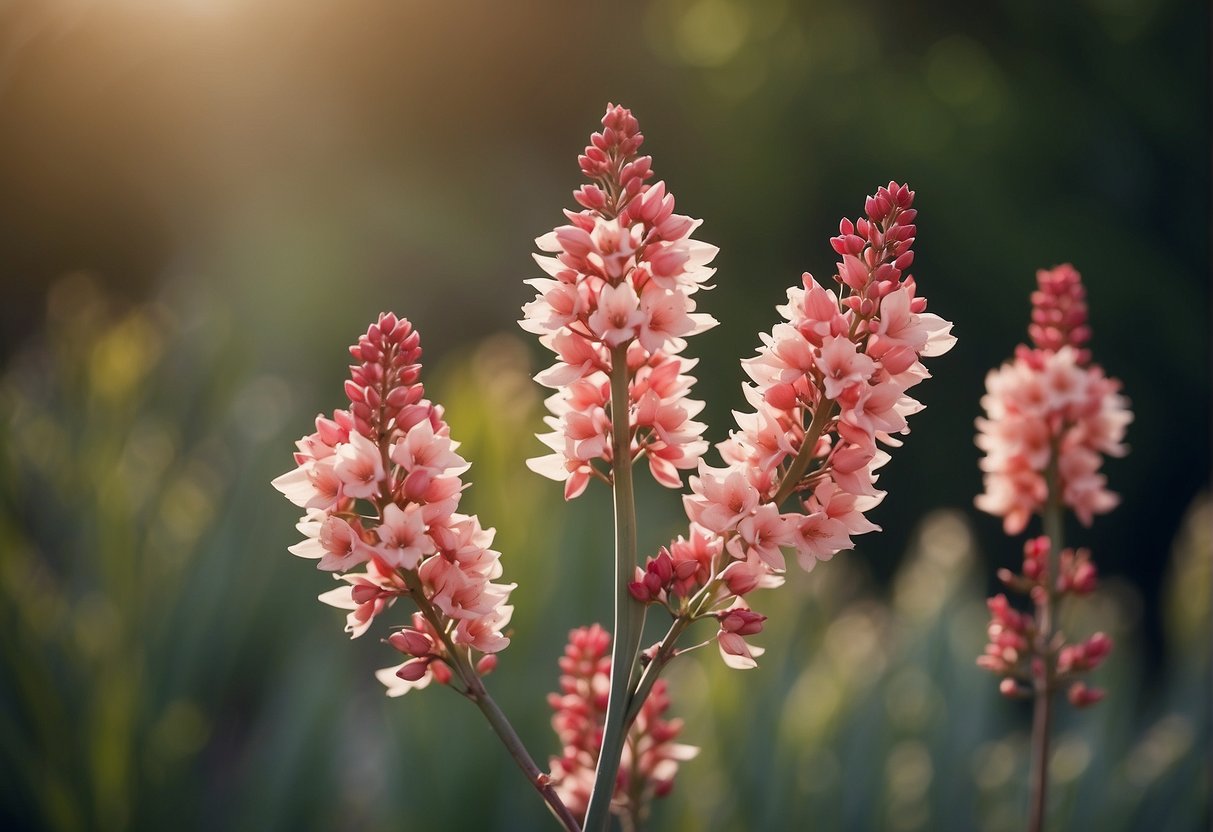When Do Red Yucca Plants Bloom: A Guide to the Blooming Season of Red Yucca Plants
If you have an affinity for the red yucca plant, you might be curious about its flowering period. This evergreen perennial succulent is favored for use in gardens and landscape designs because of its eye-catching look and easy upkeep. In this piece, we’ll delve into the flowering habits and schedule of the red yucca plant, alongside addressing some common inquiries related to this distinctive plant variety.

The red yucca plant, also known as Hesperaloe parviflora, is native to Texas and northern Mexico. Despite its name, it is not actually a yucca plant, but rather a member of the agave family. Its long, narrow leaves and tall, slender stalks make it a visually stunning addition to any garden. But when does this plant bloom? And what can you expect from its flowers? Read on to find out.
Key Takeaways
- The red yucca plant, or Hesperaloe parviflora, is an evergreen perennial succulent native to Texas and northern Mexico.
- This plant typically blooms from late spring to early fall, producing tall stalks of pink or red flowers.
- Red yucca plants are low maintenance and drought tolerant, making them a popular choice for landscaping in dry climates.
Red Yucca Plant Profile
If you are looking for a low-maintenance, drought-tolerant plant to add to your landscape, the Red Yucca (Hesperaloe parviflora) may be just what you need. This evergreen perennial succulent is native to northeastern Mexico and parts of Texas, but it can be grown in many areas of North America.
Botanical Characteristics
The Red Yucca is not a true yucca plant, but it is often called one because of its similar appearance. It belongs to the Agave family and forms a rosette of long, narrow leaves that are spineless and evergreen. The plant produces tall flower stalks that can reach up to 5 feet in height, with clusters of bell-shaped flowers that come in shades of red, pink, and yellow. The flowers bloom from late spring to early fall, attracting pollinators such as hummingbirds, moths, and butterflies.
Optimal Growing Conditions
The Red Yucca thrives in full sun, but it can also tolerate some shade. It prefers well-drained soil and is drought-tolerant once established. The plant can grow in sandy soil, but adding perlite or gravel can improve drainage. It is hardy in USDA zones 5-11 and can withstand temperatures as low as -20°F.
Plant Care and Maintenance
The Red Yucca is a low-maintenance plant that requires minimal care. Watering should be done sparingly, especially in humid areas, to prevent overwatering and root rot. Fertilizing is not necessary, but you can use a low-nitrogen fertilizer in the spring to encourage growth. Pruning should be done in the fall to remove dead flower stalks and maintain the plant’s shape.
Reproduction and Propagation
Red Yuccas can be propagated from seed, division, or offsets. Seed pods can be harvested in the fall and planted in well-draining soil. Division should be done in the spring, and offsets can be removed and planted in their own pot or in the ground.
Environmental Adaptations
The Red Yucca is a tough plant that can adapt to various environmental conditions. It can grow in rocky slopes and is often used as an accent plant in rock gardens. It can also be grown in containers and makes a great addition to beds and borders.
Wildlife Interactions
The Red Yucca is a favorite of pollinators such as hummingbirds, moths, and butterflies. It is also deer-resistant and can withstand windy conditions.
Common Issues and Solutions
Overwatering and root rot are the most common problems with the Red Yucca. To avoid these issues, make sure the plant is in well-draining soil and water sparingly. Pests such as aphids can be controlled with insecticidal soap or a strong spray of water.
Companion Plants
The Red Yucca can be paired with other drought-tolerant plants such as Salvia, Yuccas, and Agaves. It also looks great with ornamental grasses and succulents.
Overall, the Red Yucca is a low-maintenance, drought-tolerant plant that can add a pop of color to any landscape. With its tough and adaptable nature, it is a great choice for those looking for a plant that can withstand dry conditions and attract pollinators.
Bloom Characteristics and Timing

Red yucca plants, also known as Hesperaloe parviflora, are a popular choice for gardeners due to their stunning blooms. In this section, we will discuss the bloom characteristics and timing of these plants.
Flowering Period
Red yucca plants typically bloom in late spring to midsummer. The blooming period can last up to several months, depending on the species and growing conditions. During this time, the plant produces tall flower spikes that can grow up to 6 feet tall.
Color Variations
The flowers of red yucca plants come in a range of colors, including red, pink, yellow, coral, purple, and blue. The most common color is red, which is where the plant gets its name. Coral yucca, hummingbird yucca, and false yucca are some of the popular cultivars that produce different colored flowers.
Attracting Pollinators
Red yucca plants are popular with pollinators, including hummingbirds, birds, butterflies, and moths. The plant produces nectar-rich flowers that attract these pollinators. If you want to attract hummingbirds to your garden, consider planting red yucca.
After Bloom Care
Once the blooming period is over, you can prune the flower stalks to encourage new growth. You can also remove the seed pods and fruit that form after the flowers have bloomed. Red yucca plants prefer full sun and can tolerate high temperatures. They are hardy plants that can survive the fall and winter seasons.
Seasonal Considerations
Red yucca plants have a long growing season, and they require minimal care. They are drought-tolerant and can survive in a range of soil types. However, if you live in an area with harsh winters, you may need to provide some protection to the plant during the colder months.
Cultivar Selection
There are many different cultivars of red yucca plants to choose from, each with its unique characteristics. When selecting a cultivar, consider the color of the flowers, the size of the plant, and the growing conditions in your area. Some popular cultivars include Coral Glow, Desert Flamenco, and Brakelights.
Frequently Asked Questions

What are the ideal conditions for red yucca to flourish?
Red yucca plants thrive in full sun and well-drained soil. They can tolerate drought, but they need regular watering during their first growing season to establish a deep root system. Red yucca plants also prefer a slightly alkaline soil pH.
How can you differentiate between various types of Texas yucca?
Texas yuccas are a diverse group of plants, but red yucca is easy to identify. It has long, narrow leaves that are green or bluish-green and a tall, branching flower stalk that produces tubular, red or pink flowers.
What are the common issues faced when growing red yucca?
Red yucca is generally easy to grow, but it can be susceptible to root rot in poorly drained soil. It may also be attacked by pests such as aphids or spider mites. Overwatering can lead to yellowing leaves and stunted growth.
How do you care for red yucca plants in different seasons?
In the spring and summer, red yucca plants require regular watering to support their growth and flowering. In the fall and winter, they can be watered less frequently, but they still need some moisture. Red yucca plants are hardy to USDA zones 5-10 and can tolerate cold temperatures.
What is the typical growth rate of red yucca plants?
Red yucca plants grow slowly, but they can eventually reach a height of 3-4 feet and a spread of 2-3 feet. They typically bloom in the summer and fall, but the exact timing can vary depending on the climate and growing conditions.
Are red yucca plants considered invasive in certain regions?
Red yucca plants are not considered invasive, but they can self-seed and spread in favorable conditions. They are not aggressive like some other yucca species, but they should be monitored to prevent them from becoming a nuisance in the landscape.

